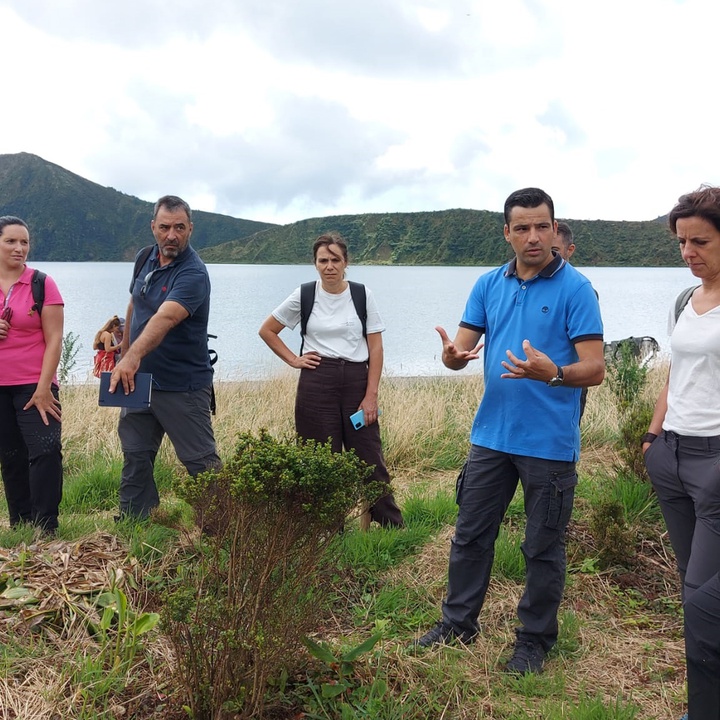Text size:
News

Alonso Miguel visited the LIFE IP AZORES NATURA project's intervention area in Lagoa do Fogo
Sept. 5, 2022
The Regional Secretary for the Environment and Climate Change, Alonso Miguel, visited today the intervention area of the LIFE IP AZORES NATURA project, on the Mata Regional do Cachaços, in Caldeira da Lagoa do Fogo, within the 5th monitoring visit carried out by the European Commission through CINEA.
Alonso Miguel said that "LIFE IP AZORES NATURA is the first integrated project approved in Portugal and the largest nature conservation project ever conceived for the Azores. The project has 19.1 million euros, co-financed by the European Union at 60 %, to be invested over nine years, aiming to improve the conservation status of 13 habitat and 24 species, in all Natura 2000 sites in the Azores, on land and at sea".
The governor said that "the Lagoa do Fogo Nature Reserve is classified as a Special Area of Conservation under the Natura 2000 network, and is therefore also the target of intervention of this project".
For the Regional Secretary for the Environment and Climate Change, today's visit "is an opportunity to monitor the work in this intervention area, with an extension of eight hectares, which aims to reconvert forest areas of Cryptomeria (Cryptomeria japonica) in native habitat, through the restoration of native vegetation and the removal of invasive species, an investment to date of about 20,000 euros.
Alonso Miguel explained that "within the scope of this renaturalisation process, more than 11,000 m3 of cryptomeria biomass and other species have already been removed, such as Australian Blackwood (Acacia melanoxylon), Elmleaf Blackberry (Rubus ulmifolius), Wild Ginger (Hedychium gardnerianum) and Dicksonia antarctica, in an area of about three hectares".
"To date, around 5,200 specimens of endemic species have already been planted, such as the Tree Heath (Erica azorica), the Laurustinus (Viburnum treleasei) and the Calluna vulgaris, with plans to plant more than 2,100 plants during the coming year," he added.
Alonso Miguel highlighted that "it is with great satisfaction that we see that, as a result of the work of invasive control and planting carried out within the scope of this project, we are already beginning to see the spontaneous and natural appearance of hundreds of new individuals of native species, helping significantly to restore this habitat".

